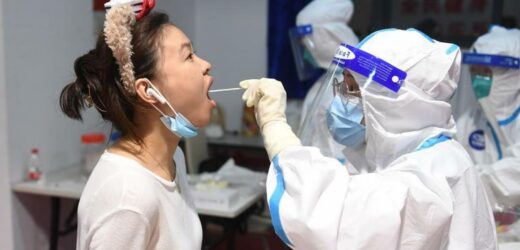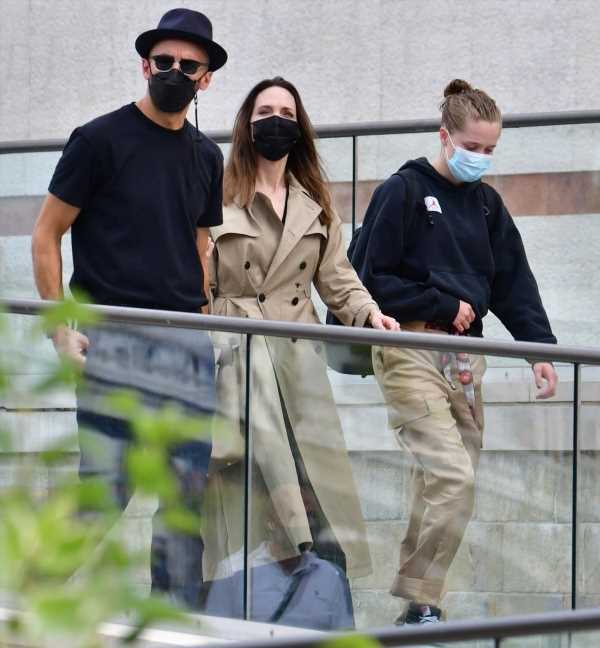MILLIONS of people have been forced back into lockdown in China as the country battles its biggest Covid outbreak in months.
The rapidly-spreading Delta variant has hit 20 cities in more than a dozen provinces – including Wuhan where the virus first emerged in late 2019.
A total of 55 new locally transmitted infections were reported today, with seven positive tests in the former coronavirus epicentre.
The Wuhan cluster came after the official daily tally was released, but it was confirmed by state media which said the infections had been traced to a train station.
"The seven were identified as migrant workers," Xinhua reported, citing Covid-19 prevention and control officials.
Major cities including Beijing have now tested millions of residents while cordoning off residential compounds and placing close contacts under quarantine.
Authorities in the capital met and agreed on the need to "raise vigilance, take strict precautions and defend (the city) to the death, sparing no expense," in comments put out by the Beijing government.
The city has cut all rail, bus and air links with areas where positive Covid cases have been reported.
Tourists are also barred during the peak summer holiday season, with only "essential" travellers with negative nucleic acid tests allowed to enter.
Residents have been told not to leave "unless necessary".
🔵 Read our coronavirus live blog for the latest updates
The capital's Changping district locked down 41,000 people in nine housing communities last week.
Elsewhere, more than 1.2 million residents were placed under strict lockdown for the next three days in the central city of Zhuzhou in Hunan province Monday.
Authorities are also rolling out a citywide testing and vaccination campaign, according to an official statement.
"The situation is still grim and complicated," the Zhuzhou government said.
China had previously boasted of its success in bringing domestic cases down to virtually zero, allowing the economy to rebound.
Pictures of thousands of partygoers enjoying gigs and nightclubs across the country sparked jealousy around the globe.
'GRIM AND COMPLICATED'
But the latest outbreak, linked to a cluster in the city of Nanjing where nine cleaners at an international airport tested positive on July 20, is threatening that success with more than 360 domestic cases reported in the past two weeks.
In the tourist destination of Zhangjiajie, famed for its national forest park, an outbreak spread last month among theatre patrons who then brought the virus back to their homes around the country.
Zhangjiajie locked down all 1.5 million residents on Friday.
Officials are urgently seeking people who have recently travelled from Nanjing or Zhangjiajie, and have urged holidaymakers not to travel.
Fresh cases were also reported on Monday in the popular tourist destination of Hainan as well as in flood-ravaged Henan province, national health authorities said.
All 10 million residents have been ordered to get tested after more than 30 cases were detected.
Wuhan, the sprawling capital of Central China’s Hubei province, first recorded coronavirus cases in late December 2019.
The number of people who have tested positive for the virus in China now stands at 93,103, with 1,091 active cases, and 4,636 deaths.
Labs in the city have been at the centre of the storm since the virus emerged just a stone’s throw from the Wuhan Institute of Virology, which was known to be studying very similar bat viruses.
Shocking biosecurity lapses spanning more than 40 years have led some to question the official Chinese line that the disease was passed from animals to humans – and the lab leak theory is gaining momentum.
WIV specialises in bat-borne viruses and had been carrying out experiences on them since 2015.
Airlocks, full body suits, and chemical showers are required before entering and leaving the facility – the first in China to be accredited with biosafety level 4 (BSL-4).
BSL-4 labs are the only areas in the world where scientists are permitted to study diseases that have no cure.
Scientists from the lab even tested a mysterious virus which killed three miners 1,000 miles away in Yunnan province in 2012.
LAB LEAK THEORY
It has been suggested this fatal bug may have been the true origin of Covid-19.
Experts at the lab also engineered a new type of hybrid 'super-virus' that can infect humans in 2015, according to journal Nature Medicine
The study was designed to show the risk of viruses carried by bats which could be transmitted to humans.
There is no suggestion the facility's 2015 work is linked to the pandemic and the facility denies the lab leak claims.
But some experts remain adamant Covid came from the laboratory.
As well as working to contain rising Covid cases, China is also battling deadly flooding.
Last month panicked passengers fearing death texted their wills and final goodbyes to loved ones as floodwaters on subways rose to neck level and air ran out.
The official flood death toll now stands at 302, with at least 50 people still missing.
Source: Read Full Article




